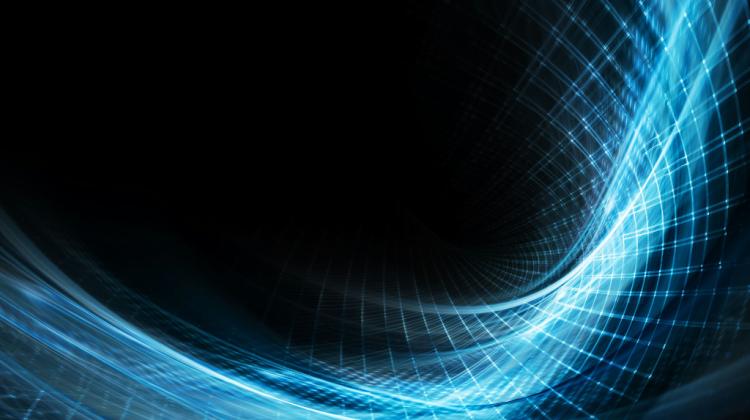Electronics and spintronics are not the end. Time for valleytronics!

Electrons in graphene carry not only electric charge and information about spin, but also information about the so-called pseudospin. Research of the last of these properties will enable the development of a completely new branch of technology - valleytronics (analogous to electronics and spintronics).
Dr. Adam Rycerz from the Institute of Physics of the Jagiellonian University, laureate of the National Science Centre Award, is working on a theory that can help in the development of valleytronics. "My research concerned the theoretical foundations of the components of a graphene quantum computer" - the physicist said in an interview with PAP.
The researcher investigated what was happening in electron gas trapped in graphene. Graphene consists of a single layer of carbon atoms. It has very interesting properties, including excellent electrical and heat conductivity, it is stretchable and durable. Its unique properties are related, among other things. with the bizarre quantum nature of electrons from the carbon atoms that move in this structure. These electrons - particles that, after all, have mass, in graphene behave - at least from the viewpoint of the observer - as if they had no mass" - said Dr. Rycerz.
"Electrons are not like people - they are identical, indistinguishable" - said the scientist. But he explained that in graphene such particles can be described using quantum numbers - degrees of freedom. The simplest quantum number is the charge, because each electron has its electric charge. The second quantum number is spin. You can say that each electron has a small magnet that can be turned up or down" -he said. In addition, when an electron is in graphene, the particle gains another degree of freedom - the artificial spin, or pseudospin. This property is independent of the normal spin. Electron in graphene may be in the valley K or K\'. "Mathematically it is as if there was a fictitious magnet in another space" - said the physicist.
Manipulating charges enabled the development of electronics (current - electron with charge either is or is not present). Manipulating the next degree of freedom of electrons - spin - enabled the development of spintronics. And the ability to manipulate pseudospin opens up a new field of technology - valleytronics.
Dr. Rycerz and his colleagues from the University of Leiden (Netherlands) created the theory and performed computer simulations that show how electrons with a particular pseudospin could be extracted from the current flowing through graphene. Dr. Rycerz showed that the current would have to pass through a funnel - a 10-20 nm filter. "The current going through this funnel will be completely polarized. Electrons in the valley\'s degrees of freedom will be set in one direction. It seems that by combining such systems in series, it will be possible to perform logical operations on electrons" - said Dr Rycerz.
What Dr. Rycerz did was just theoretical research. "Even if you build a filter, it\'s not yet known how to control it, check if it really works" - the physicist pointed out.
"Before compass was built and used in sailing, people in China had long known toys made from magnetic material that maintained direction. We are still at the stage of designing such toys. But technical development is faster today. I hope that we will not have to wait hundreds or thousands of years for practical applications of our research... " - joked Dr. Rycerz.
The National Science Centre Award is an annual initiative of the National Science Centre, which aims to promote outstanding researchers conducting basic research (experimental and theoretical work undertaken primarily to acquire new knowledge, without any direct commercial application) in Poland. The award is given to researchers below 40 years of age, and the awarded achievements must result from experiments and theoretical work. PAP - Science in Poland is one of the sponsors of the National Science Centre Award.
Author: Ludwika Tomala
PAP - Science and Scholarship in Poland
lt/ ekr/ kap/
tr. RL
Przed dodaniem komentarza prosimy o zapoznanie z Regulaminem forum serwisu Nauka w Polsce.















